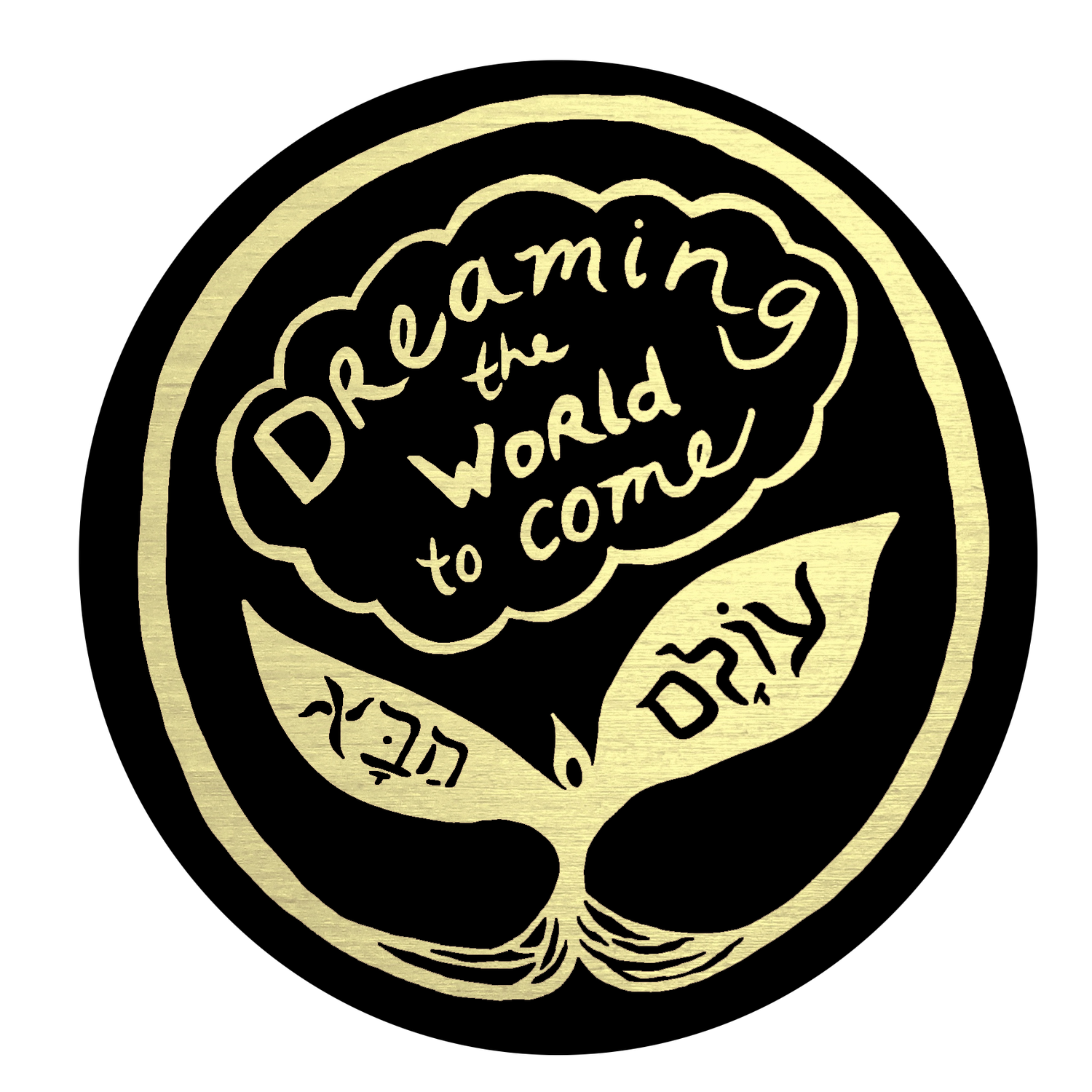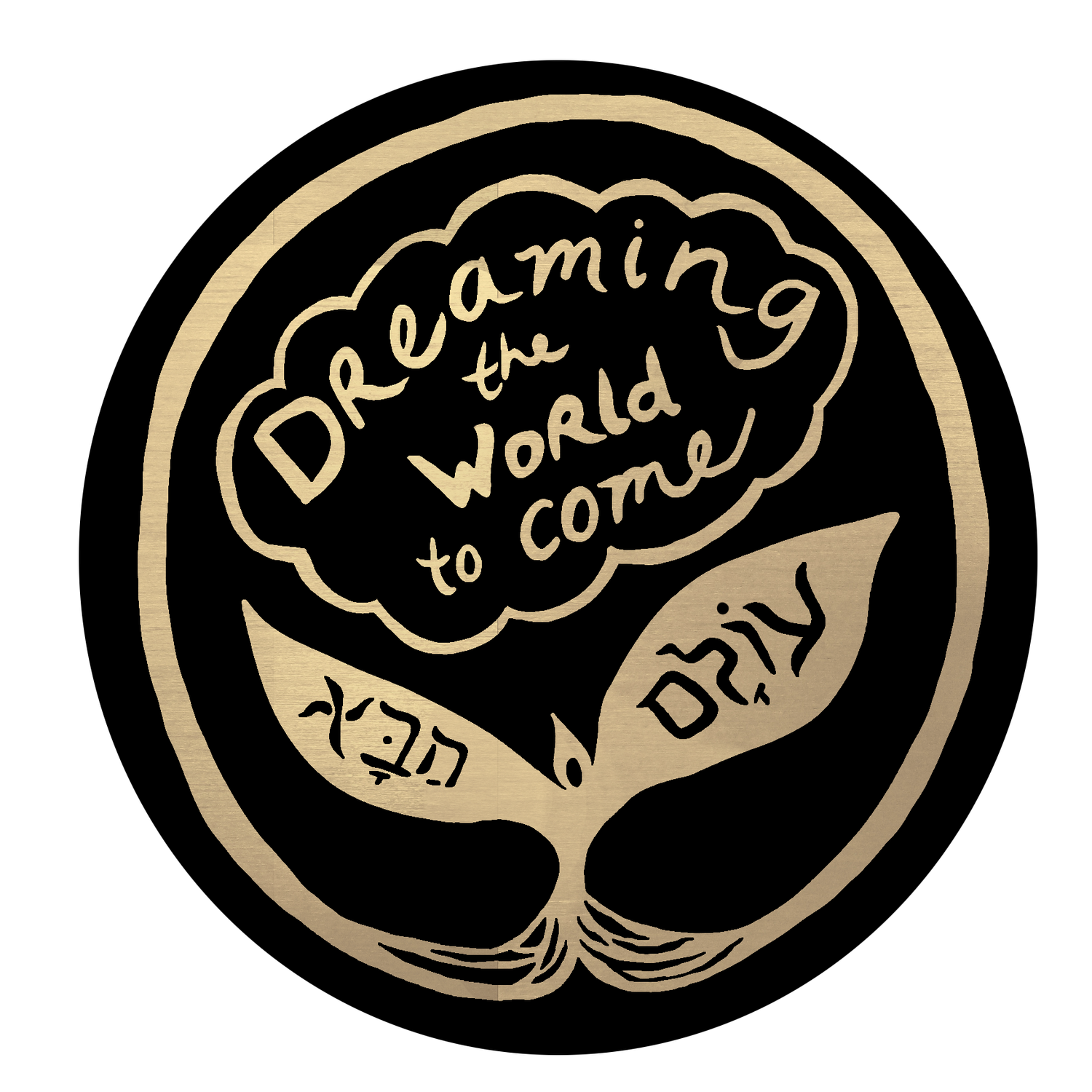Holidays
Like all Hebrew days, the Jewish holidays begin at sundown. We welcome our festivals and holy days in the erev, the evening. Unlike our modern western conception of time where the day starts at midnight while many of us are asleep, in Jewish time we are meant to witness the transition from one day to another, to welcome and honor the mixing of light and dark, the liminal space, the slow unfolding of what is being born. In the Dreaming the World to Come planner, you will see that the erev of most holidays is marked on the night before the holiday, but know that *every single day* actually begins and ends in the evening. It is a reorientation of our flow of awareness, to begin in the evening instead of the morning, and it is a difficult one to translate into a daily planner.
The Hebrew calendar is oriented to the moon, and many of our holidays fall on either the new moon or the full moon. Rosh Hashanah, the head of the year, coincides with the sliver of moon that begins the month of Tishrei. Where the new moon offers opportunity for seed planting, intention setting, and deep dreaming, the new year offers a time to commit to this practice for a larger cycle. Sigd, a holiday unique to Beta Israel (Ethiopian Jewish) communities, falls just before the new moon going from Cheshvan into Kislev, 50 days after Yom Kippur, marking a completion of the High Holy Days. Chanukah falls during the transition from Kislev into Tevet, during the darkest time of the month at the darkest time of year.
Full moon festivals include Sukkot, the harvest of joy, Tu b’Shvat, the new year of trees, Purim, the carnival, Pesach, the festival of liberation, and Tu b’Av, the love holiday. There are some holidays that don’t seem to fall directly on a new or full moon, most notably Shavuot, the festival of revelation, which originated as a harvest festival falling 50 days after the first night of Pesach. This 50 day portal is also known as the “Counting of the Omer,” see the month of Nisan for more information.
The Olam haBa calendar will help you track and plan for the holidays, and the thirteen visionaries we called upon for wisdom help us go deeper into the offerings of each holy day or festival.
Here is a list of Jewish Holidays:
Chanukah: Festival of Lights in Kislev and Tevet, lasting 8 days, celebrated with candle lighting each evening.
Chag Ha’Banot: Festival of Daughters, a North African holiday, often associated with Judith, that falls during Chanukah on Rosh Chodesh Tevet.
Days of Awe: The High Holy Days, first ten days of Tishrei, from Rosh Hashana to Yom Kippur.
Lag B’Omer: 33rd day of Omer, bonfire ritual commemorating Shimon Bar Yochai’s death, in Iyar.
Leil Slichot: Day to begin prayers for forgiveness said in preparation for High Holy Days, in Elul.
Mimouna: A North African holiday on the day after Passover that marks the return to eating chametz or leavened bread, in Nisan.
Minor Fasts: There are four minor fasts, which last from sunup to sundown. These are: 1) Tzom Gedaliah, the day after Rosh Hashanah, commemorating the day Gedaliah Ben Ahikam was killed. 2) Asarah b’Tevet, the 10th of Tevet, marking the beginning of the siege of Jerusalem by Nebuchadnezzar. 3) Ta’anit Esther, the 13th of Adar (the day before Purim unless it falls on Shabbat), commemorating the fast of the Jewish people in preparation for Esther’s confrontation with Ahashueros and Haman; 4) Shiva Asar b’Tamuz, the 17th of Tamuz, which commemorates the day the Romans breached the walls around Jerusalem, leading to the destruction of the temple. There is one additional fast day that is in a slightly different category, which is Ta’anit Bechorim/Ta’anit Bechorot, the fast of the first-born, observed only by first-born children on the day before Passover, to commemorate the loss of the first-born in the Passover story.
Passover / Pesach: Festival of Liberation, celebrated with a long elaborate meal and storytelling, 8 days in Nisan.
Purim: Carnival Holiday, story of Esther, in Adar (Adar II in a leap year).
Rosh Hashanah: Head of the Year, 2 days, beginning of Tishrei.
Shavuot: Festival of Revelation, 2 days in Sivan, marking the end of the Omer period, observed by staying up all night studying.
Shemini Atzeret: Rain Festival, the day after Sukkot, in Tishrei.
Sigd: Meaning “Prostration,” Sigd is specific to the Beta Israel / Ethiopian Jewish community, falling 50 days after Yom Kippur, on the 29th of Cheshvan.
Simchat Torah: Celebration of the Torah, re-rolling the scroll back to the beginning, two days after Sukkot, in Tishrei.
Sukkot: Harvest Festival, a portal for joy when we make temporary outdoor shelters, 7 days long in Tishrei.
Tisha B’Av: Destruction of the Temple / day of inconsolable grief, 9th of Av. This is one of two Major Fasts, which lasts from sundown to sundown.
Tu B’Av: Love Holiday, in biblical times it corresponded with the grape harvest and girls would trade clothes, wear all white, and dance under the full moon, 15th of Av.
Tu B’Shvat: The Birthday of Trees, 15th of Shvat.
Yom Kippur: Day of Atonement, ten days after Rosh Hashanah, in Tishrei. This is one of two Major Fasts, which lasts from sundown to sundown.

